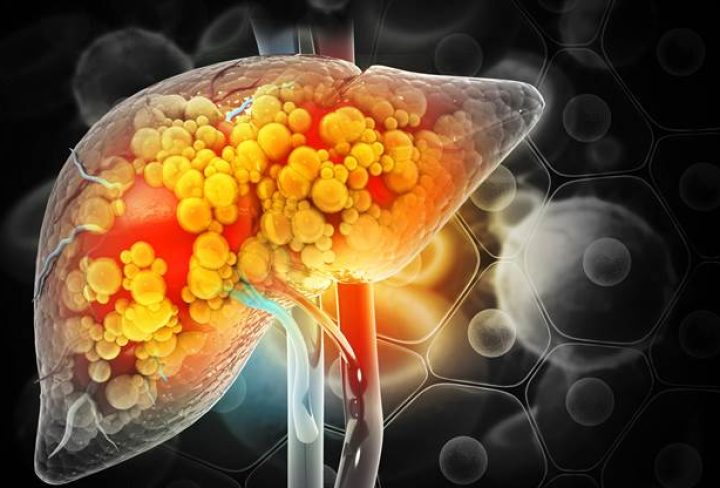Fatty liver is a condition noted for excess fat build-up in the liver cells. While the liver normally contains some fat, more than 5% weight in fat indicates fatty liver disease. This blog details the causes of fatty liver, tells you what to watch out for, and explores effective methods for managing and treating this condition.
Introduction: The Basics of Fatty Liver Disease
Fatty liver disease is when excessive fat accumulates in the liver. This could potentially cause further health issues. The condition is widespread, affecting many people worldwide. Modern lifestyles, marked by poor eating habits and diminished physical activity, contribute significantly to this.
Managing fatty liver is crucial to prevent serious complications. If not addressed timely, it can progress to liver scarring—known as cirrhosis—which can severely impact liver function. Hence, early management and lifestyle adjustments play a pivotal role in controlling its progression.
Living with a fatty liver means keeping an eye on possible developments and being mindful of health choices. While not always preventable, developing a consistent approach to management can significantly lessen its impact. Early intervention remains the key to preserving liver health and avoiding future risks.
Understanding Different Types of Fatty Liver Disease
Fatty liver comes in two main forms—Alcoholic Fatty Liver Disease and Non-Alcoholic Fatty Liver Disease (NAFLD). Alcoholic fatty liver develops from excessive alcohol consumption. In contrast, NAFLD occurs due to factors unrelated to alcohol, primarily metabolic concerns like obesity or high cholesterol.
Within NAFLD, there’s a more severe form known as Non-Alcoholic Steatohepatitis (NASH). In NASH, the liver not only stores excess fat but also develops inflammation, which can lead to significant liver damage, including cirrhosis.
Understanding the differences helps in recognizing the fatty liver symptoms and deciding the course of treatment. Knowing whether the disease is alcohol-related or metabolic in origin can be helpful in tailoring an effective fatty liver diet plan and lifestyle modifications as per the individual’s condition.
What Causes Fatty Liver? Identifying the Culprits
The causes of fatty liver are diverse, with several contributing factors. Obesity tops the list. Significant body weight increases the risk significantly, especially when combined with diabetes.
Lifestyle factors take center stage in developing fatty liver. A diet high in unhealthy fats and sugars, along with a sedentary lifestyle, accelerates fat accumulation in the liver. Alcohol consumption remains a primary factor for alcoholic fatty liver.
Genetic and environmental influences play a part too. Some families show a predisposition, but environmental factors like diet and lifestyle choices can alter an individual’s risk. Understanding these causative factors is vital for effective management and prevention.
Spotting the Warning Signs: Fatty Liver Symptoms
Identifying fatty liver symptoms early can guide quicker intervention. Common signs to watch for include:
- Persistent fatigue
- Discomfort or pain in the upper right abdomen
In more advanced stages, the symptoms grow serious:
- Jaundice (yellowing of skin and eyes)
- Noticeable swelling in the abdomen
While some people may not experience noticeable fatty liver symptoms, being aware of these signs aids in early detection and prevention of complications.
Diagnosing Fatty Liver: Tested Methods and Procedures
To diagnose fatty liver, doctors use a series of tests and procedures. Blood tests are crucial and check liver function by analyzing liver enzyme levels.
Imaging tests, such as ultrasound and MRI scans, offer a more detailed look. These tests can indicate the presence of liver fat, differentiating it from other potential causes of symptoms.
In certain situations, a liver biopsy may be necessary. This involves taking a small sample of liver tissue for analysis. Though more invasive, biopsies can provide detailed insights, confirming fatty liver disease and assessing potential damage or scarring.
Proven Treatments and Interventions for Fatty Liver
Treating fatty liver often involves simple but effective lifestyle changes. Here’s how you can manage it efficiently:
- Diet: Following a tailored fatty liver diet plan rich in fruits, vegetables, lean proteins, and whole grains can help significantly.
- Exercise: Regular physical activity not only helps shed excess weight but also improves liver function.
Medications may address related conditions like cholesterol or high blood pressure, enhancing overall management strategies. While emerging treatments are being researched, medication is still in its infancy regarding direct fatty liver treatment.
Alternative therapies, such as Vitamin E, have shown promise. Some herbal remedies are under study, though caution is recommended due to limited evidence on their efficacy and safety. Always consult a healthcare provider before trying new alternatives.
Preventing Fatty Liver: Habits for a Healthier Liver
Preventing fatty liver focuses on maintaining a health-conscious lifestyle. Adopting the following habits can help:
- Healthy Eating: Choose a balanced diet low in refined sugars and saturated fats.
- Regular Exercise: Aim for at least 30 minutes of physical activity most days.
- Managing Metabolic Conditions: Keep cholesterol and blood pressure under control through lifestyle or medication.
By sticking to these practices, one can significantly reduce the likelihood of developing fatty liver and maintain a healthy liver.
Conclusion: Moving Forward with Fatty Liver Awareness
In summary, understanding fatty liver involves knowing its types, spotting symptoms, and being aware of causes of fatty liver. Early detection and lifestyle changes remain key in its management.
Consulting healthcare professionals can provide individualized advice and treatment plans. Their guidance can help you effectively manage your condition, highlighting steps specific to your health needs. Stay informed and engage with healthcare providers to ensure a proactive approach to fatty liver management.

